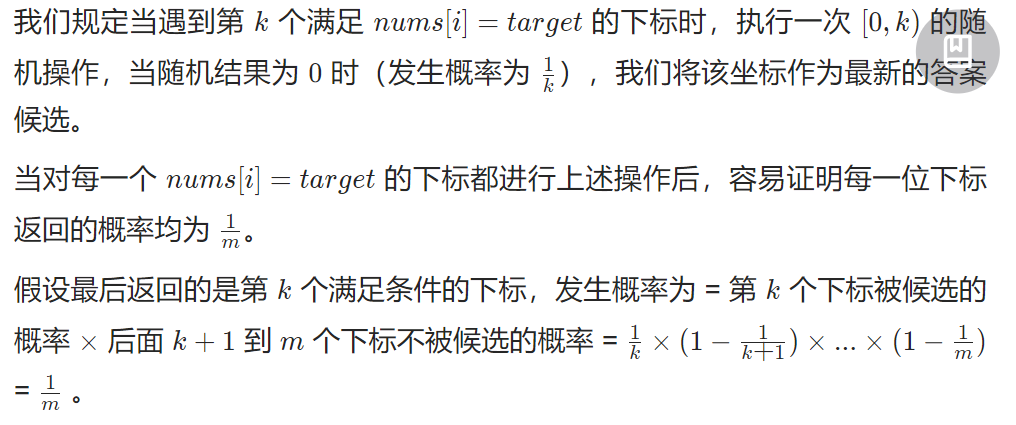给定一个可能含有重复元素的整数数组,要求随机输出给定的数字的索引。 您可以假设给定的数字一定存在于数组中。
注意:
数组大小可能非常大。 使用太多额外空间的解决方案将不会通过测试。
示例:
int[] nums = new int[] {1,2,3,3,3};
Solution solution = new Solution(nums);
// pick(3) 应该返回索引 2,3 或者 4。每个索引的返回概率应该相等。
solution.pick(3);
// pick(1) 应该返回 0。因为只有nums[0]等于1。
solution.pick(1);
class Solution {Map<Integer, List<Integer>> map = new HashMap<>();Random random = new Random();public Solution(int[] nums) {int n = nums.length;for (int i = 0; i < n; ++i) {List<Integer> list = map.getOrDefault(nums[i], new ArrayList<>());list.add(i);map.put(nums[i], list);}}public int pick(int target) {List<Integer> list = map.get(target);return list.get(random.nextInt(list.size()));}}/*** Your Solution object will be instantiated and called as such:* Solution obj = new Solution(nums);* int param_1 = obj.pick(target);*/
蓄水池抽样

class Solution {//蓄水池抽样int[] nums;Random random = new Random();public Solution(int[] nums) {this.nums = nums;}public int pick(int target) {int n = nums.length;int res = 0;for (int i = 0, cnt = 0; i < n; ++i) {if (nums[i] == target) {cnt ++;if (random.nextInt(cnt) == 0) res = i;}}return res;}}/*** Your Solution object will be instantiated and called as such:* Solution obj = new Solution(nums);* int param_1 = obj.pick(target);*/

